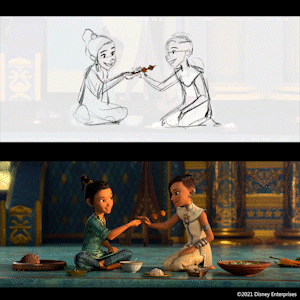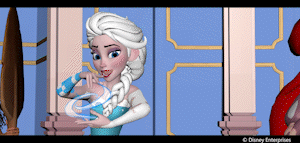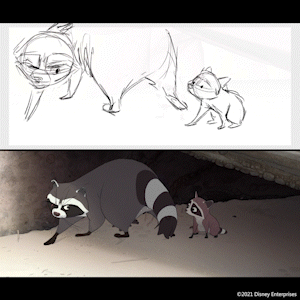Text
Whispering Pain: The Silent Punching Bag
I remember the days when my heart yearned to soar,
To heal from the grip of nervousness at my core.
But a conflict unfolded, a tale left untold,
A misunderstanding, my spirit felt cold.
In 2019, a year of hope’s fresh beginning,
Yet it brought solitude, heartache, and sinning.
I felt cast aside, deemed repulsive and shunned,
In a world where I’d wished to be cherished, loved, and one.
A yearning for change, to find a brighter way,
To mend the pain from those dark, anxious days.
But a behemoth of misunderstanding loomed,
Turning my dreams into shadows, they gloomed.
Social anxiety, a weight I’ve always borne,
Grew heavier still, as misunderstandings were sworn.
Not a physical pain, but an ache deep inside,
A yearning for connection, a place to confide.
I toiled, tried, strived to carry the load,
Hoping one day, from isolation, I’d be bestowed.
To finish my work, return to the group, perhaps,
Break free from all the many endless traps.
But amidst my struggle, a concealed shadow played,
A history of bullying, its scars never to fade.
A friend’s anger, unleashed without refrain,
In silent battles, I endured the pain.
On the bus, he seized my arm with force,
In a moment, a simple choice took a different course.
His anger flared, an unwarranted fight,
A physical altercation, a painful, silent night.
I was a passive ragdoll, helpless in his grip,
My dignity and spirit taken on a trip.
My upper arm bore the marks of his rage,
A personal punching bag, in a silent cage.
On the train, he pushed and he pulled, I was ensnared,
A puppet on strings, in a world unprepared.
The altercation so brutal, a passenger's heart stirred,
To stand up for me, they called the police, that act so absurd.
Yet his public demeanor, a fun side he'd display,
Concealing the truth, as he played the day away.
In the shadows, he'd torment, in the light, he'd amuse,
Two sides of the same coin, a double-faced ruse.
My heart aches in confusion, emotions run deep,
Empathy for his struggles, my secrets I keep.
Yet anger and helplessness, I feel just the same,
As his punching bag, a voice without claim.
Can I have that too, a glimpse of the light,
To relieve the burden, the thorn, the fight?
Yet beneath the surface, a pain I can’t voice,
A past of silent abuse, a difficult choice.
As I stand at the crossroads, my thoughts take flight,
To share the full story or keep it out of sight.
To clear my name, or protect my friend’s fate,
A struggle within, a choice I contemplate.
I yearn to solve the problem, clear this misapprehension,
But my social anxiety, a relentless apprehension.
It hinders my capacity to make things right,
Leaving me to seek guidance through the night.
Why make me go through this, I pray, O divine,
Make me whole, let your grace brightly shine.
Let the rumors subside, the truth unfurl,
Or better yet, inspire him to share the story with the world.
[random chatgpt aided poem]
0 notes
Link
5 notes
·
View notes
Link
0 notes
Link
Competitive Vs Collaborative
And why the Zero-Sum game will get you nowhere
A year ago, I went to a seminar about social interactions where I spent an immersive day, in a room, learning about the subtle dynamics that shape our way of interacting. I am a very rational extrovert so interacting with people in a direct and fact-oriented manner comes pretty natural to me, which is not the case when it comes to the more emotional, energy-oriented side of interactions. While I was at this event, the guy teaching from the stage gave a very clear distinction about something that stuck in my head ever since. He talked about the competitive frame versus the collaborative frame.
Frames are basically the reality or perspective from which you understand and make sense of the outside world. So, if you’re coming from a competitive frame you are probably interpreting the interaction in terms of win/lose. On the other hand, if you come from a collaborative frame, you tend to build on whatever was thrown at the interaction and instead of seeing it in terms of winner/loser, you shift your intention more into the interaction itself and keeping the flow going.
The reason why this is profound for me is because I naturally gravitated toward this competitive win/lose dynamic. Now I am a big believer in the power of competitiveness. In fact. Competitiveness is so rooted in who I am I can trace it back to my earliest childhood memories
“Aaah! the feeling when you stupidly do a 10 stair jump while you’re older, supposedly stronger cousin chickens out…. Nothing beats that!”
My competitive nature is also why I like being challenged and why I keep pushing when things get tough. So, I believe that the competitive frame is a powerful way of seeing things if you want to differentiate yourself, get things done and flatter your ego as much as you can on your way to the top. So far so good!
The problems arise when there isn’t necessarily a need for winners and losers. The school system encourages us to be more competitive. The high-graded kid gets awarded while the low-graded one gets punished. And if you were raised by well-intentioned but inept parents who thought its great education to constantly compare you to others like I was, it gets even more intense.
We were taught to adopt this competitive frame ALL THE TIME! But with social interactions, no matter the context, adopting the competitive frame is counterproductive because it comes with this ego-driven inner dialogue of “I want to win, I want to look cooler, I need the recognition, I want to take the biggest part of the pie…”. So, the competitive frame is a taker frame. I noticed that every time I adopted competitive frame, my interactions were stifled and lacked energy.
The magic happens when you make the switch from “what can I take” to “what can I add to the interaction”. Everything becomes lighter and more enjoyable.
That competitive inner dialogue is heavy. It’s actually like carrying this big backpack, and all you can think of is getting to the destination of winning then you will feel better. Ironically when you shift your focus to collaborating and building upon what’s already there, you drop the backpack; you are lighter, and you get there faster. That’s what I call adopting the collaborative frame.
I found out that using this collaborative frame was useful when giving presentations or public speaking. When I start, I’m almost always in a competitive frame and having that inner dialogue of “I need to impress the audience, I need to appear smart and confident, I should not lose their attention…”.I used to plan every word, everything I was going to say, trying to control the presentation which was not a smart move.
Now what I do I concentrate on knowing my stuff and go fully unscripted thinking “I don’t have to control anything, I’m here to share, they’re here to listen, I’m going to teach them something, give them great ideas and we’re all going to have fun!” What happens is that it takes me a few minutes to get out of my head and out of the “competitive frame”, and everything plays out fine afterward.
This collaborative frame is also present in sales and negotiations: If you had any experience selling something, you know that “the customer is always right” thing is pure hogwash. The customer is almost never right, but no matter where he stands, you better not compete with him to change his mind, that is why the first rule of selling is to always agree with the customer.
You can find collaboration at the core of improvisation exercises too. Whatever the improviser says, you respond, “Yes…” Then build on that. If someone says, “we’re at the jungle”, you don’t say, “No we’re on a plane,” you say, “yes, let’s jump on trees and eat bananas!” or whatever.
0 notes
Link
Some, he argues, might cling to their ideals while the reality swings away from them. In his case, the metaphor has clear limits—because his point is that we place too high of expectations on our work and careers, expecting them to give us meaning and purpose in life, which they cannot deliver.
In the case of the church, however, we have not expected too much, but too little. The church is meant to shape our character and, if not to grant meaning to our life, then to at least to point us toward the meaning—through worship, mission, and teaching.
Yet some have seen behind the veil to a kind of Christianity that does not even aspire to holiness, love, gentleness, Christlikeness, renewal of mind, bearing of burdens—the kind of church found in the New Testament. These people are often led to the point of exhaustion at the incongruity of it all, perhaps questioning if they were lied to all along.
For some, Malesic contends, the stilt walking falters when they ignore the reality and hold on to their ideals anyway. This is the sort of coping mechanism we see in those who wave away the current crisis in the church by saying, “Well, think of all the good things happening” or “Most people aren’t like that” or “The church was never meant to be made up of perfect people.”
Those things are easy to believe, because there’s a sense in which they are all true. But often, in times like these, what they really mean is “Don’t talk about these matters in public; we can handle them on our own in private, but we don’t want to give Jesus a bad reputation.” The problem is, Jesus never asked his church to protect his reputation, especially by covering up when something wrong or dangerous is done in his name.
But what’s more is that, as Malesic points out in the workplace, the “If we don’t talk about it, it will go away” mentality cannot hold. If our moral ideals are strong but we reassure ourselves with a false version of reality, we will end up seeing through our own delusions—and others certainly will.
And when that happens, it results in a different kind of burnout—frustration. That is, we begin to despair that anything ever can or will eventually be done to fix things.
0 notes
Video
2D Planning for CG Shots
Because posing a CG character involves manipulating a number of individual controls, it can be slightly time consuming and disrupt the creative flow when first exploring the acting. For this reason, I’ll sometimes draw thumbnails of my ideas or make a pose test in 2D before posing the character in CG.
Not only does this workflow help me arrive at my ideas quicker, but also allows me to explore shapes that I wouldn’t necessarily have arrived at had I jumped into the CG first.
If the performance in CG requires something more complex, like dealing with object constraint setups, or posing a unique character rig, I’ve found a 2D pass helps me iterate on my ideas quicker, instead of being bogged down by the technical.

Even if the drawings are rough, it allows me to plan out things quickly so I can invite other departments, like FX, to collaborate earlier in the process, which can lead to great discussion and iteration to improve the original idea. I find it’s a great tool for visualizing things in context, especially when there’s a back and forth interaction between the character and FX.



Here are some things I’ve found helpful when making a 2D planning pass:
-I’ll use a playblast of the layout as the BG for my 2D drawings, especially if there’s a camera move involved. Sometimes I’ll keep the layout animation of the character as reference in the BG so I’ll know the size of the character when I draw it.
-Sometimes I’ll draw with more detail when I’m “feeling” out the idea, and other times I’ll draw extremely scribbly to keep things loose and keep the flow going. One time, Mike Gabriel told us a story where he found he was more efficient with his 2D animation by enlarging his thumbnails in the xerox machine, cutting them out, taping them to his animation paper, and using them as his animation keys. When I was on Moana, I tried the modern equivalent of this by shrinking down my digital canvas size so I was forced to make thumbnail drawings. I found the thumbnails forced me to keep the poses clear and not get too focused on the details.

-When I’m done with my 2D planning pass, I’ll add the mov file as an image plane to the camera, but I’ll have the image plane off to the side as reference, not directly behind the CG character. I’m not rotoscoping the CG to the 2D, but instead I’ll want to match the spirit of the pose/idea using the rig.

-I consider my 2D planning as the step before the actual Blocking Pass. If I feel there’s a better option as I’m posing in CG, I’ll pose that instead. If you look at the video at the top of this post, you’ll see I’m sometimes deviating from either the timing or poses in the planning for a better idea (Note how the baby raccoon reacts differently in my final version in the gif below). These ideas can come from directors, yourself, or your peers. Just remember, your 2D planning pass is like a rough draft. Don’t be precious about it or unwilling to change it. It’s just another tool to help tap all the entertainment potential in your shot!

3K notes
·
View notes
